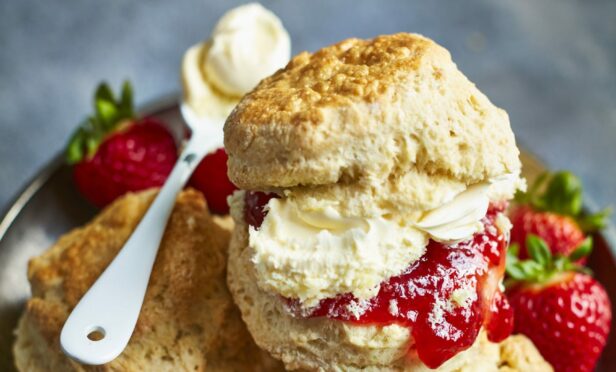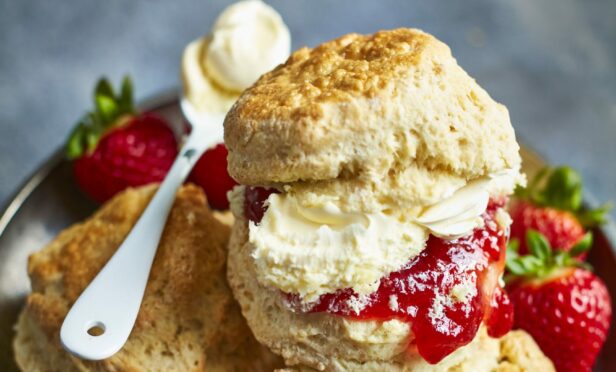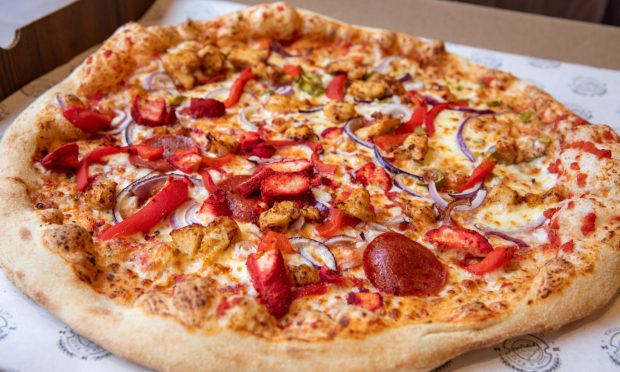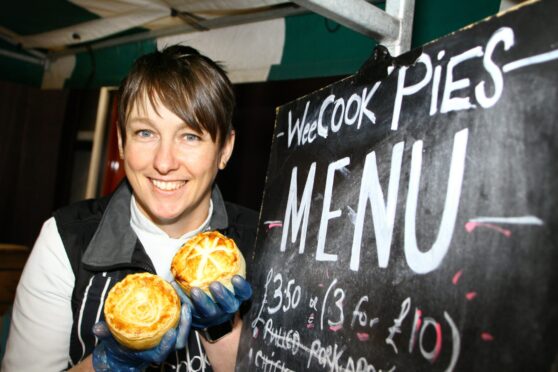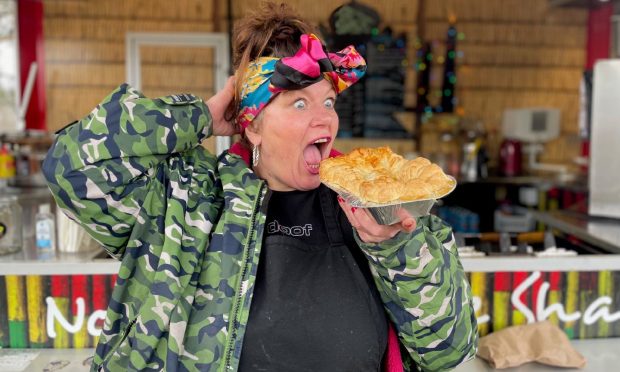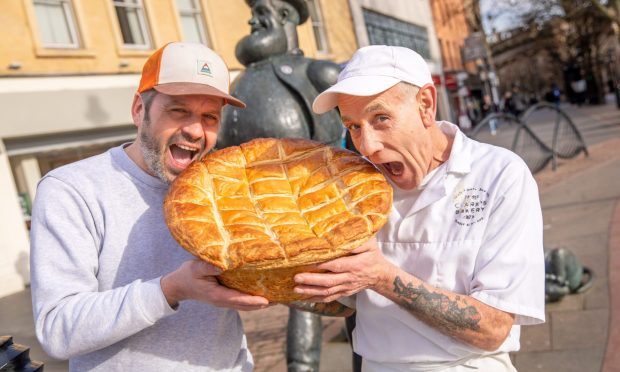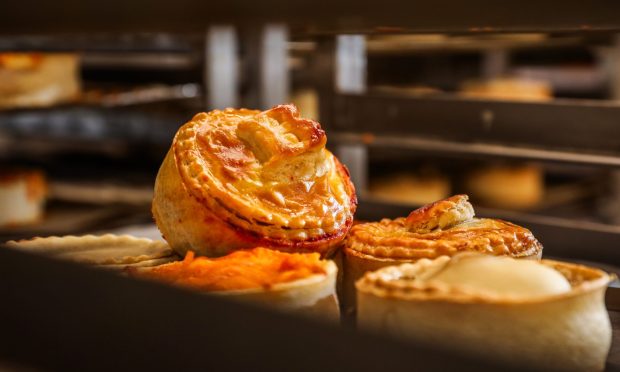This recipe for sweet scones is included in The Platinum Jubilee Cookbook by Ameer Kotecha, and is the perfect addition to any summer afternoon tea.
Food is so much more than just nourishment – it can be an expression of your culture, among other things, and a powerful diplomatic tool.
Few people know this better than Ameer, a junior diplomat and foodie who has written a Palace-approved Platinum Jubilee Cookbook to honour 70 years of the Queen’s reign.
With summer in full swing, these royally approved sweet scones are easy to make and will be a favourite amongst all your friends and family.
Why not try Ameer’s simple and delicious recipe below.
Sweet scones
Makes 10
Ingredients
- 350g self-raising flour, plus extra for rolling
- A generous pinch of salt
- 1 tsp baking powder
- 85g unsalted butter, plus extra for greasing
- 3 tbsp caster sugar
- 175ml whole milk
- 85g sultanas (optional)
- 1 egg, beaten, to glaze
To serve:
- Devonshire or Cornish clotted cream
- English strawberry jam
Method
- Preheat the oven to 220C/200C Fan/425F/Gas Mark 7 and put a lightly greased baking tray inside to heat up at the same time.
- Tip the self-raising flour into a large bowl with the salt and baking powder, and mix to combine. Add the butter, and rub it in with your fingertips until the mixture resembles fine crumbs (you can do this in a food processor, but take care not to over-process the mixture). Stir in the caster sugar.
- Make a well in the centre of the dry mixture, then add the milk and combine it quickly with a fork until you have a sticky dough.
- Lightly flour your work surface and tip out the dough. Sprinkle some more flour over the dough and, using floured hands, knead the dough very lightly.
- Work in the sultanas, if you like – to make fruit scones. Roll out the dough to a rough rectangle about 3cm thick.
- Dust a 5cm round pastry cutter with a little flour and cut out as many circles as you can, re-rolling the trimmings as necessary until you have used up all the dough and have 10 scones.
- Brush the top of each scone with a little beaten egg, trying not to let it drip down the sides (which can stop the scones rising evenly).
- Then, place the scones on the hot baking tray in the oven.
- Bake them for 12-14 minutes, until they are risen and a pale, golden brown colour. Remove the scones from the oven and transfer them to a wire rack to cool.
- Eat the scones either just warm or fully cool, but as soon as possible. There is only one way to serve them: split in half and served with lashings of clotted cream and strawberry jam.
The Platinum Jubilee Cookbook by Ameer Kotecha is published by Jon Croft Editions, priced £30. Available now.
